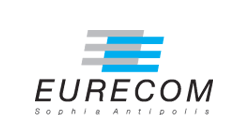We address the problem of distributed computation of arbitrary functions of two correlated sources X1 and X2, residing in two distributed source nodes, respectively. We exploit the structure of a computation task by coding source characteristic graphs (and multiple instances using the n-fold OR product of this graph with itself). For regular graphs and general graphs, we establish bounds on the optimal rate -- characterized by the chromatic entropy for the n-fold graph products -- that allows a receiver for asymptotically lossless computation of arbitrary functions over finite fields. For the special class of cycle graphs (i.e., 2-regular graphs), we establish an exact characterization of chromatic numbers and derive bounds on the required rates. Next, focusing on the more general class of d-regular graphs, we establish connections between d-regular graphs and expansion rates for n-fold graph powers using graph spectra. Finally, for general graphs, we leverage the Gershgorin Circle Theorem (GCT) to provide a characterization of the spectra, which allows us to build new bounds on the optimal rate. Our codes leverage the spectra of the computation and provide a graph expansion-based characterization to efficiently/succinctly capture the computation structure, providing new insights into the problem of distributed computation of arbitrary functions.



